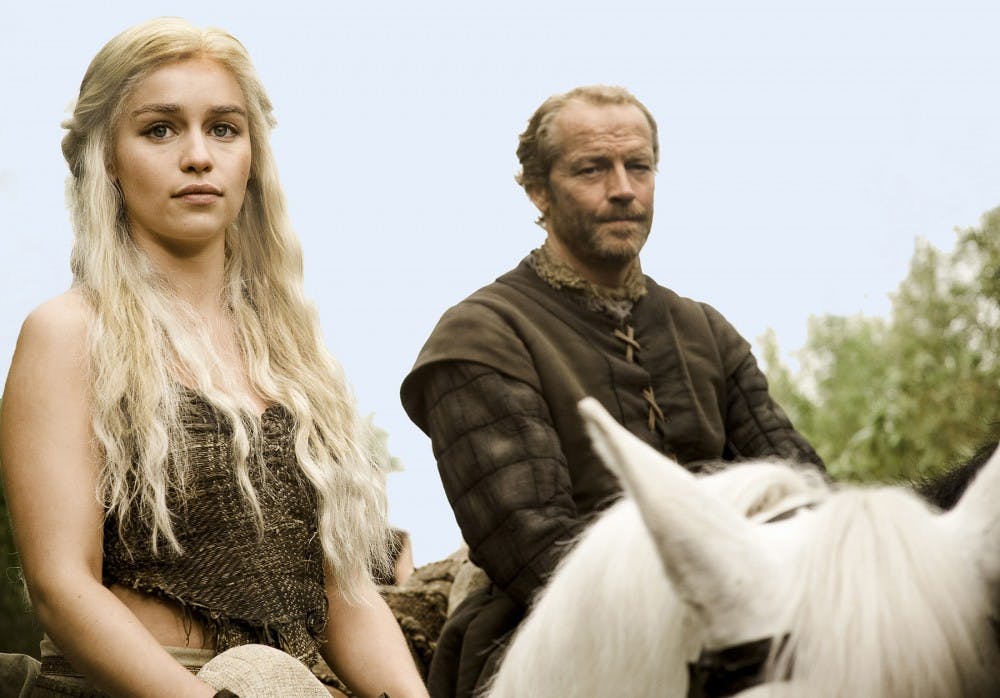HBO’s fantasy serial shows episodes as chapters of George R.R. Martin’s book
At the start of the fourth season, “Game of Thrones” has 28 main characters and countless more minor characters. Your reward for learning the fictional family trees and tracking characters over an unheard-of number of separate plotlines? Multiple main character deaths a season. “Game of Thrones” is a harsh mistress, but like a good book, it’s too immersive to quit.
The HBO fantasy series is based on George R.R. Martin’s “A Song of Ice and Fire” novels, and unlike other book adaptations that make wild changes to suit the new medium, “Game of Thrones” shares nearly everything with its source material. In fact, it’s structured just like the books, a wide-ranging novel of a television show that doesn’t bend to the constraints of the medium.
For much of television’s history, shows have been episodic. Because anyone could tune in at any time, shows structured their episodes into self-contained escapades so viewers could watch any one at random and understand what was going on. This is the formula of crime procedurals “Law and Order” or “CSI” and many comedies.
As audiences grew more comfortable with tracking their favorite shows, TV transitioned into more serialized storylines, linking plot developments directly between episodes. Most dramas are now mostly serial with a degree of the episodic; for example, “Breaking Bad” has a continuous storyline, but orders its episodes around specific events or themes.
“Game of Thrones” is nearly 100 percent serial, only connecting its disparate plotlines through the occasional theme or motif. Stories such as Jon Snow’s adventures north of the Wall and Daenerys Targaryen’s rise to power in the East often move forward at one scene per episode, only telling a coherent story in the context of the whole season.
Lacking the immediacy of self-contained stories, “Game of Thrones” has to sink its hooks into you in different ways. One of the show’s main strengths is its strong character work, a gift from the book series. In the novels, each chapter is from the perspective of a different character, meaning that the show has a deep reserve of personality and detail to apply to its main characters. Morally gray and infinitely charismatic, Tyrion Lannister is an obvious standout, but the series gives all of its main characters something interesting to do, allowing the vicious Cersei Lannister vulnerability and the righteous Stannis moral complexity.
Another benefit from having the books’ wide perspective is a deep cast of supporting characters, who add a huge amount of color to the series. The series has one eye on the politics of the kingdom, meaning that political schemers such as eunuch Varys, pimp turned treasurer Littlefinger and the elderly Queen of Thorns are constantly jostling for power and prestige. Another theme is the rise of magic in the realm, highlighted by crusader Beric Dondarrion and sultry mystic Melisandre.
Jamming all of these characters, plotlines and themes into one series would normally be disastrous, but the novelistic structure of the series allows all of these elements room to breathe. Watching an individual episode of “Game of Thrones” is less like watching a miniature movie and more like reading a section of a novel — you don’t get everything handed to you in one sitting, but for an hour, you’re transported into a fully-realized fantasy world.

